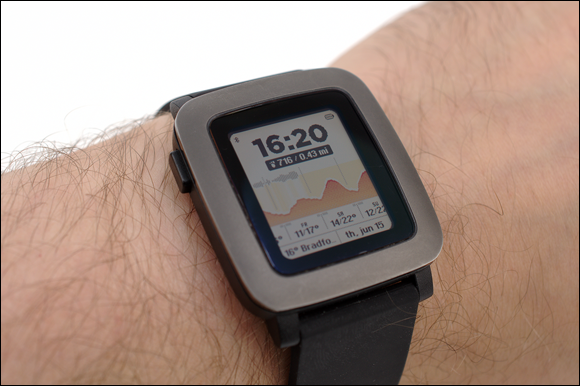Chapter 12
The Wearable BBC micro:bit
In this chapter
![]() A look at what makes the BBC micro:bit so well suited to wearable and embedded projects
A look at what makes the BBC micro:bit so well suited to wearable and embedded projects
![]() An explanation of conductive thread
An explanation of conductive thread
![]() The Rain-Sensing Hat: A semi-practical project for you to build
The Rain-Sensing Hat: A semi-practical project for you to build
WHILE THE WORLD’S first computers were literally the size of a room—or, in some cases, several rooms—the march of technology has given us devices of greater processing power which we can fit in our pockets. As soon as electronics became small enough, people started to find ways to carry them around at all times. Pocket calculators led to digital watches, which eventually gave rise to the modern smartwatch (see Figure 12-1) and related devices like fitness trackers and location monitors.

FIGURE 12-1: A smartwatch-style wearable
Although most people’s main experience of wearable electronics is for tasks like schedule notification and fitness monitoring, the technology is used in a variety of fields. Hardware is being developed which aims to monitor the wearer’s health, with tiny pill-like sensors which can be swallowed to monitor internal health, ...
Get The Official BBC Micro:bit User Guide now with the O’Reilly learning platform.
O’Reilly members experience books, live events, courses curated by job role, and more from O’Reilly and nearly 200 top publishers.

